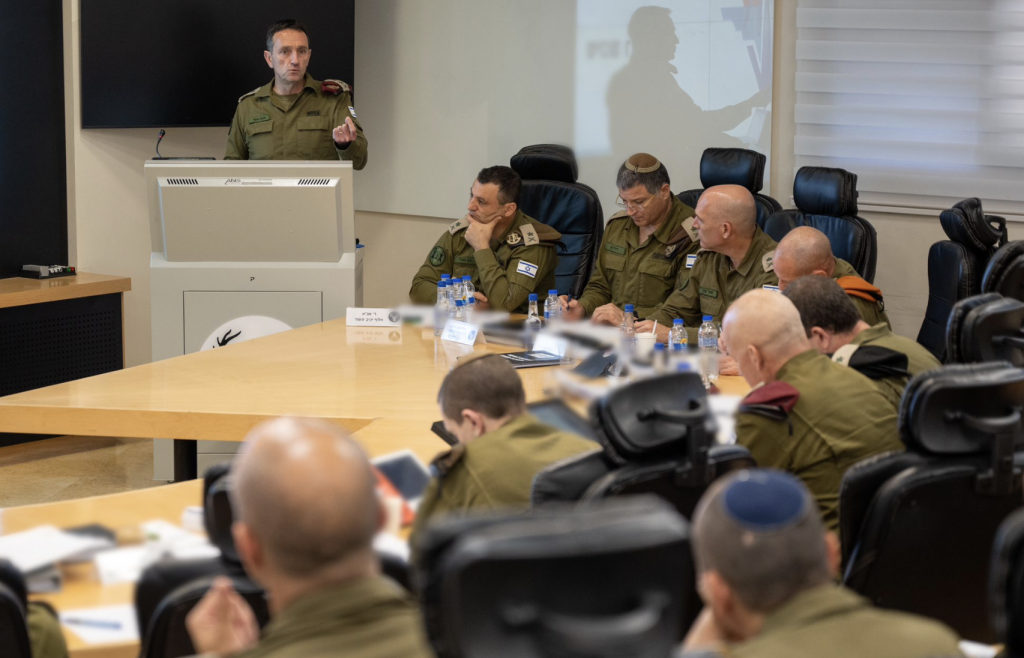
On April 2, Israel’s Defense Minister Yoav Gallant said “we are currently in a multi-front war – we see evidence of this every day,” during a meeting with the Israel Knesset’s Security and Foreign Affairs Committee. The comments came a day after a senior Iranian Islamic Revolutionary Guard Corps commander was killed in an airstrike in Damascus and two days after an Israeli naval base in the southern city of Eilat was damaged by a drone flown from Iraq by Iranian-backed militias.
Israel now faces challenges on a number of fronts. Although Israel did not take responsibility for the airstrike in Damascus, Iran has blamed Israel for the attack and vowed to avenge it. The attack has also raised eyebrows around the region because it took place at a building adjoining the Iranian consulate in Damascus. Russia, countries in the Gulf and other states have condemned the airstrike.
Gallant said in his comments on April 2 that “we operate everywhere, every day, in order to prevent our enemies from gaining strength and in order to make it clear to anyone who threatens us – all over the Middle East – that the price for such action will be a big one.” His comments underscore the defense ministry’s current posture and how the IDF has prepared for a multi-front war for years. However, the October 7 attack forced Israel to rethink some of its strategy and assumptions. Iran took advantage of the attack by Hamas and prodded its proxies and partners in the region to carry out attacks. This began with Hezbollah attacking Israel on October 8, followed by the Houthis joining the war via attacks directed at Eilat. Iranian-backed militias in Iraq and Syria have also targeted US forces and Israel.
Six months into the war in Gaza, Israel faces a number of challenges on these fronts. The Iraqi militias targeting Eilat with a drone shows that long-range kamikaze drones can pose a significant threat. Iran has exported drones across the region, including its Shahed 136 which was seen in Yemen in early 2021. Iran then exported the drone to Russia for Moscow’s war in Ukraine. Iranian-backed militias have used various types of drones in attacks against Israel and US forces over the last several years. Israel is investigating the latest incident in which a drone penetrated Israeli airspace and flew toward the port city of Eilat from the east.
“Hamas has ceased to function as a military organization in most parts of the Gaza strip. Their commanders are hiding in tunnels, they have lost command and control capabilities, the battalion frameworks in most parts of the strip have ceased to function. The Hamas brigade in Rafah however, is still standing, with its four battalions. We will address this soon,” Gallant said. In Gaza, an Israeli airstrike on April 1 struck three vehicles, killing seven people working for World Central Kitchen while delivering humanitarian aid. WCK has played a key role in the maritime corridor from Cyprus. Israel’s IDF spokesperson said he spoke with WCK Founder, Chef Jose Andres and “expressed the deepest condolences of the Israel Defense Forces to the families and the entire World Central Kitchen family.” Israel is now investigating the incident, but this has already cast a shadow over humanitarian operations in central and northern Gaza. This could also be a setback for future operations in Rafah because in addition to WCK, other humanitarian operations and other countries like the UAE have been impacted by the airstrike.
Meanwhile in southern Lebanon, an Israeli warplane “struck the terrorist cell in the area of Wadi Hamoul that fired launches toward the Western Galilee area,” the IDF said. In the West Bank, unrest has spread to Tulkarm and other cities in the northern West Bank where armed groups, including Palestinian Islamic Jihad and Hamas, are increasingly confronting the Palestinian Authority security forces. Iranian media has said that the armed groups in the West Bank, which it labels “resistance factions” to show that Iran backs them, have “warned” the Palestinian Authority. This highlights the Islamic Republic’s interest in the chaos unfolding in the West Bank, and it potentially presents another challenge for Israel if the clashes grow and spread. Almost six months into the war and despite a number of successes, Israel faces challenges from Iraqi drones, humanitarian challenges in Gaza and chaos in the West Bank.







